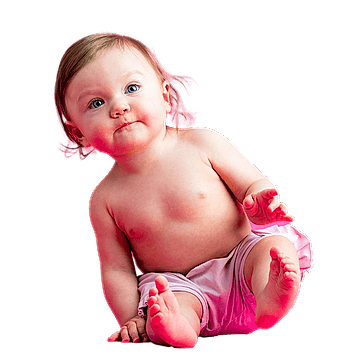
Imagine a world where every baby sleeps peacefully through the night, and every parent sleeps soundly knowing their little one is safe. This ideal scenario can be closer to reality than you might think. Creating a safe sleep environment for your baby is not just about ensuring they get enough sleep; it’s about making sure they do so in the safest manner possible. In this article, we’ll explore the essential steps and precautions every parent and caregiver should take to ensure their baby's sleep environment is as secure as it can be.
The importance of creating a safe sleep environment for babies cannot be overstated. Sudden Infant Death Syndrome (SIDS) and other sleep-related deaths have been significantly reduced thanks to increased awareness and education on safe sleep practices. However, despite this progress, sleep-related deaths still occur, making it crucial for parents and caregivers to be well-informed about creating a safe sleep space for their infants.
A safe sleep environment begins with understanding the basics: babies should always be placed on their backs to sleep, on a firm sleep surface, such as a mattress in a safety-approved crib, covered by a fitted sheet with no other bedding or soft objects. This position reduces the risk of SIDS and is considered the safest sleep position for infants.
Room-sharing, but not bed-sharing, is another recommendation for safe infant sleep. The American Academy of Pediatrics suggests that infants sleep in the same room as their parents, close to their bed but on a separate surface designed for infants, ideally for the first year of life. This arrangement has been shown to decrease the risk of SIDS by as much as 50%.
Another key aspect of a safe sleep environment is maintaining the right temperature and avoiding overheating. Babies should be dressed appropriately for the sleep environment, with one more layer of clothing than an adult would wear to be comfortable in the same environment. Overheating has been linked to an increased risk of SIDS, so it’s crucial to ensure your baby is not too warm during sleep.
"A safe sleep environment is paramount in reducing the risk of SIDS and ensuring that your baby not only sleeps peacefully but safely."
Choose the Right Crib and Mattress: The crib or bassinet should meet current safety standards. Look for a firm mattress that fits snugly within the crib, leaving no gaps where a baby could potentially get stuck.
Keep the Sleep Area Clear: Pillows, blankets, stuffed animals, and bumper pads should be kept out of the baby's sleep area. These items can pose suffocation risks and should be avoided to create a safe sleep space.
Consider Using a Sleep Sack: A wearable blanket or sleep sack is a safe alternative to loose blankets, which can cover a baby's face during sleep and increase the risk of SIDS.
Monitor the Room Temperature: Ensure the room is not too hot or too cold. The ideal room temperature for a baby to sleep comfortably is between 68°F and 72°F (20°C and 22°C).
Practice Safe Swaddling: If you choose to swaddle your baby, make sure it is not too tight and that the baby is always placed on their back. Discontinue swaddling when the baby shows signs of being able to roll over.
(Additional Insights or Tips)
Educate Everyone: It’s important that everyone who cares for your baby knows and practices safe sleep guidelines. This includes grandparents, babysitters, and daycare providers.
Stay Informed: Safe sleep guidelines and recommendations can change as new research becomes available. Stay informed by consulting reputable sources such as the American Academy of Pediatrics for the latest in safe sleep practices.
Trust Your Instincts: If something doesn’t feel right about your baby's sleep environment or sleep practices, it’s always better to err on the side of caution and make adjustments as necessary.
Create a Bedtime Routine: Establishing a consistent bedtime routine can not only help your baby sleep better but also reinforce the importance of the sleep environment. A calming routine before bed can signal to your baby that it’s time to sleep.
Regularly Inspect Sleep Environment: Regular checks for wear and tear on cribs, mattresses, and sleep accessories can prevent accidents and ensure the sleep environment remains safe.
In conclusion, creating a safe sleep environment for your baby is a multifaceted task that involves careful consideration of the sleep space, adherence to safe sleep practices, and staying informed about the latest guidelines and recommendations. By taking these steps, parents and caregivers can significantly reduce the risk of sleep-related incidents and provide a safe, comfortable space for their babies to rest. Remember, safe sleep practices are not just recommendations; they are crucial measures to protect your baby’s well-being.
